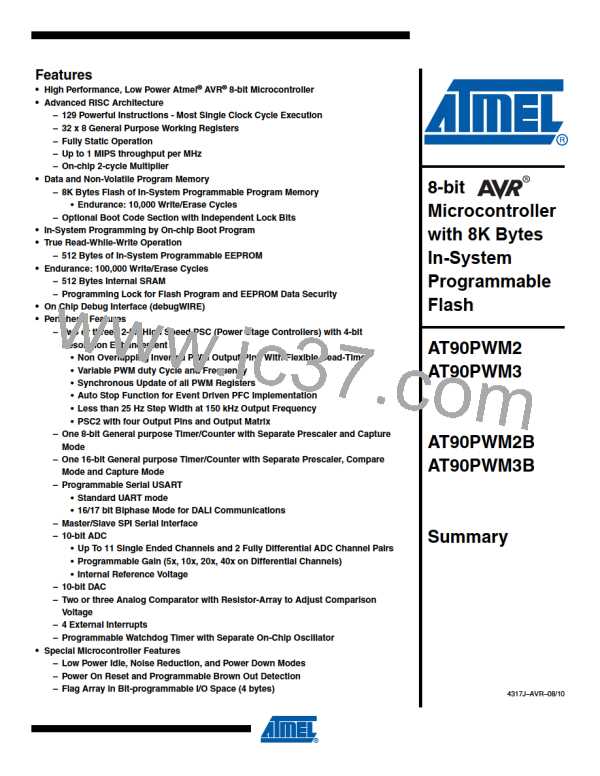AT90PWM2/3/2B/3B
18.8.3
Asynchronous Operational Range
The operational range of the Receiver is dependent on the mismatch between the received bit
rate and the internally generated baud rate. If the Transmitter is sending frames at too fast or too
slow bit rates, or the internally generated baud rate of the Receiver does not have a similar (see
Table 18-2) base frequency, the Receiver will not be able to synchronize the frames to the start
bit.
The following equations can be used to calculate the ratio of the incoming data rate and internal
receiver baud rate.
(D + 2)S
(D + 1)S + S
R
= -----------------------------------
fast
M
(D + 1)S
S – 1 + D ⋅ S + S
R
= ------------------------------------------
slow
F
D
S
Sum of character size and parity size (D = 5 to 10 bit)
Samples per bit. S = 16 for Normal Speed mode and S = 8 for Double Speed
mode.
SF
First sample number used for majority voting. SF = 8 for normal speed and SF = 4
for Double Speed mode.
SM Middle sample number used for majority voting. SM = 9 for normal speed and
SM = 5 for Double Speed mode.
Rslow is the ratio of the slowest incoming data rate that can be accepted in relation to the
receiver baud rate.
Rfast is the ratio of the fastest incoming data rate that can be accepted in relation to the
receiver baud rate.
Table 18-2 and Table 18-3 list the maximum receiver baud rate error that can be tolerated. Note
that Normal Speed mode has higher toleration of baud rate variations.
Table 18-2. Recommended Maximum Receiver Baud Rate Error for Normal Speed Mode
(U2X = 0)
D
Recommended Max
Receiver Error (%)
# (Data+Parity Bit)
R
slow (%)
93.20
94.12
94.81
95.36
95.81
96.17
Rfast (%)
106.67
105.79
105.11
104.58
104.14
103.78
Max Total Error (%)
+6.67/-6.8
5
6
3.0
2.5
2.0
2.0
1.5
1.5
+5.79/-5.88
+5.11/-5.19
+4.58/-4.54
+4.14/-4.19
+3.78/-3.83
7
8
9
10
199
4317J–AVR–08/10

 ATMEL [ ATMEL ]
ATMEL [ ATMEL ]